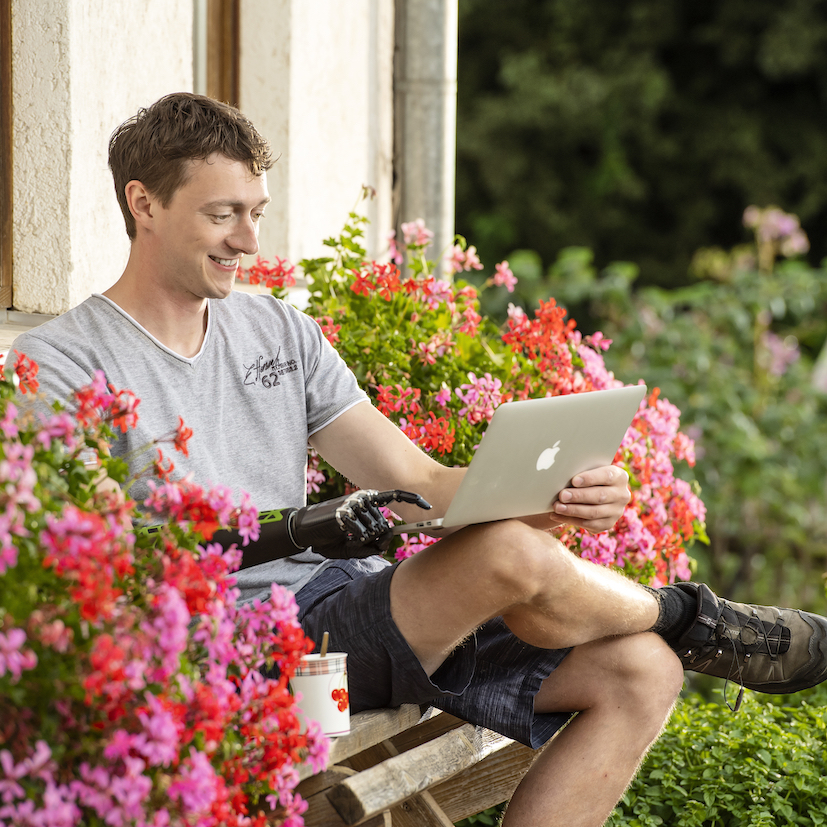
The Challenges Of Copying Natural Movements
I plead guilty. The articles on The Active Amputee are very much focussed on lower limb amputations. The reasons being are simple. First and foremost, I write most of the posts. And I am an above knee amputee. Second, most other amputees I personally know and try to chat into contributing something to the blog are lower limb amputees, too. And last but nor least, generally speaking there are many more lower limb amputees in the wider society than upper limb amputees. Exact numbers are hard to get, but let’s take Germany for example. According to a recent press release by OttoBock there are about 250 arm amputations in Germany per year. In the same time we see about 18,000 amputations of lower limbs (both above knee and below knee amputations). This is not meant to be an excuse that there is so little information for people with differences in their upper limbs on The Active Amputee. But I hope it sheds some light on the ‚Why?‘. And I am working on this. So let me start right here and now as there are exciting developments in this regard in the prosthetic sector.
Artificial Intelligence – The Prosthesis That Learns From Humans
Our arms and hands and how they work together are amazing. They perform mindbogglingly complex tasks day in day out. And the best thing about them, they seem to do this automatically. We hardly need to think about which muscles to flex, which joints to move, which bones and body parts to rotate in order to perform a certain movement or get a job done.
Each person who lost an upper limb can tell you just how immensely challenging it is to replicate nature with a prosthetic device. Even seemingly simple manual tasks take weeks of practice and
full concentration. Having a high frustration tolerance certainly helps. Up to know, most prosthesis users have had to use specific so-called 'co-contractions' to alternate manually between
individual functions of the prosthesis. They use brief simultaneous contractions of two muscle groups to operate their prosthesis. But there is something new on the market now. It has been
developed by OttoBock and is called Myo Plus. According to OttoBock Myo Plus is Europe's first prosthesis control device with pattern recognition. And it’s said to be a game changer.
Recognising, Saving And Retrieving Movement Patterns
And this is how it works. According to a recent press release by OttoBock: „Eight electrodes in the prosthesis control device measure the movement patterns of muscles in the residual forearm and
assign them to certain hand movements or grips. Tying shoelaces or turning a doorknob, for example. When the patient reaches out for a bottle of water, the Myo Plus prosthesis control device
recognises the associated movement pattern and gives the prosthesis the command to perform the respective grip or rotation. This is done automatically.“
The User Is In Control Of The Learning Process
Once the prosthetic device has been fitted, the user now has much more freedom and autonomy to independently manage the prosthesis control device via an app. As with other apps that have recently handed more control to the amputee him or herself, The Myo Plus app works with measured movement patterns, enabling the user to practice subconsciously accessing each precise pattern. It is said to be intuitive and many patients master the use the new control device within a matter of days.
According to OttoBock, the main challenge a user faces is „the similarity between individual patterns. Due to the fact that many hand movements differ only by the slightest nuance, Myo Plus has to recognise and correctly assign a huge number of different patterns. As soon as communication between the user and the control device has been established, the user can save any progress via the app and thus make their own adjustments.“
As mentioned above, as an above knee amputee I have no personal experience with prosthetic devices for upper limb loss. But having seen the struggle of amputees when trying to get used to their prosthetic arms and hands, this sounds like a promising development. I will try to find out more over the following weeks. And if you are - or know - an upper limb amputee and would like to contribute, please feel free to contact me any time. I would love to hear from you.
Until then, all the best.

Post by Bjoern Eser. Bjoern is the founder of The Active Amputee. This post is based on a press release by OttoBock.
Further Reading

The ADK climbing foot
Climbing is a great sport. And there is no reason why people with a limb difference shouldn‘t give it a try. I have been climbing years and I tried a variety of set-ups; i.e. completely without any artificial limb (no socket, no knee, no foot, no nothing) and with the C-Leg (but with my normal day-to-day foot) before settling on the ADK climbing foot. The ADK foot is a rather unspectacular piece of gear but it works surprisingly well for me. read more

Getting into paraclimbing
Climbing is an amazing sport. Full stop. No matter if you are into bouldering or top-roped routes at a local climbing wall, prefer pre-bolted sport routes outdoors or love the thrill of proper multi-pitch trad climbing or a deep-water solo, the sport has something for everybody. And I mean everybody, no matter if you are able-bodied (what ever that is) or not. read more

Safety tip for paraclimbers
As there is such and interest in this amazing sport, I would like to share one more tip for those of you who want to give it a go. For those among you who might even try climbing with your prosthesis or a special climbing leg/foot.
Depending on the set-up you use and depending on the fit of your socket, it’s essential to secure your artificial limb to your climbing harness. Why? Well… read more